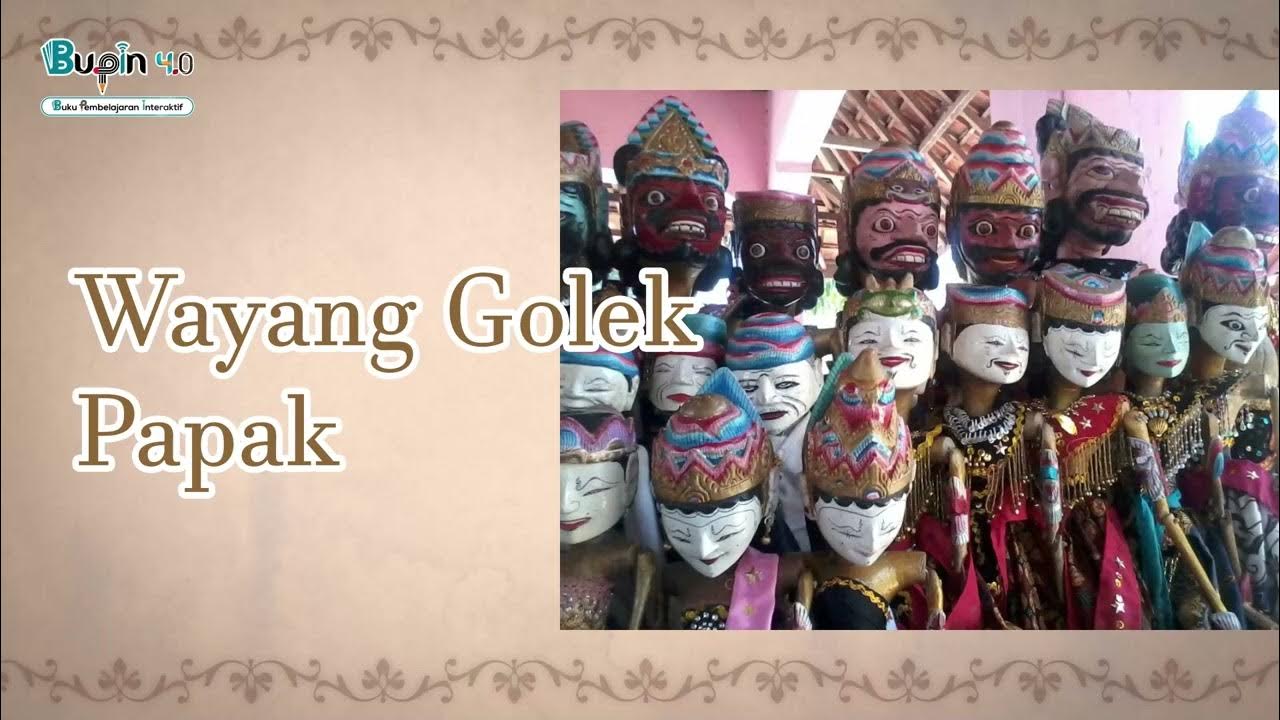Video Inovasi Pembelajaran Bahasa Jawa || Teks Crita Wayang
Summary
TLDRThis engaging Javanese language lesson blends cultural education with humor, focusing on wayang (puppet theater) characters from the Mahabharata and Ramayana. Hosted by Pak Heri, the session is lively and interactive, featuring lively discussions about iconic figures like Gatotkaca and Arjuna. The script incorporates playful elements and references to pop culture, creating an enjoyable and dynamic atmosphere for learning. The lesson encourages students to explore traditional stories while fostering a fun, energetic environment for learning Javanese language and culture.
Takeaways
- 😀 The speaker begins with a casual greeting and sets the tone for an informal yet educational session on Javanese culture, specifically focusing on wayang puppet theater.
- 😀 The script introduces wayang, a traditional form of Javanese performance, and the speaker aims to explain its significance and the characters involved.
- 😀 Key mythological epics, such as the Mahabharata and Ramayana, are referenced as central themes in the wayang stories, with a focus on famous characters like Arjuna and Gatotkaca.
- 😀 The speaker mentions how wayang performances tell the stories of the Pandava brothers (Mahabharata) and the heroic adventures within these narratives.
- 😀 Gatotkaca's role as a brave and heroic character in the Mahabharata is highlighted, emphasizing his strength and emotional depth.
- 😀 The script makes playful references to modern pop culture (e.g., 'Naruto' and 'Samsung'), blending traditional themes with contemporary elements to engage the audience.
- 😀 The speaker reflects on the philosophical aspects of wayang stories, such as the moral lessons about life and bravery, exemplified by figures like Arjuna and Karna.
- 😀 Humor is used throughout the script to maintain a lively atmosphere, with casual, relatable language and expressions aimed at engaging the audience.
- 😀 A shift between formal storytelling and informal interactions helps create a dynamic experience, making the lesson both educational and entertaining.
- 😀 The speaker closes with a reminder of the importance of staying motivated and engaged in learning, using humor and references to encourage the audience to keep participating.
Q & A
What is the focus of the video script?
-The script primarily focuses on introducing and discussing Javanese language and culture, with specific attention given to traditional wayang (puppet) performances, including Mahabharata and Ramayana stories, along with characters from these epics.
What is the significance of wayang in Javanese culture?
-Wayang, particularly wayang kulit (shadow puppetry), is a traditional form of storytelling in Javanese culture. It is used to narrate stories from epic tales like the Mahabharata and Ramayana, helping to preserve cultural heritage and convey moral lessons.
Who are the main characters discussed in the script from the Mahabharata?
-The main characters mentioned from the Mahabharata include Pandawa brothers, Kurawa, and Gatotkaca, a heroic figure who is discussed in relation to his character arc in the epic.
What role does Gatotkaca play in the Mahabharata according to the script?
-Gatotkaca is portrayed as a heroic figure with a tragic fate. The script briefly mentions his story, including his powerful abilities and his eventual death during a key battle in the Mahabharata.
What are the key elements of wayang performances discussed in the script?
-The script highlights the various types of wayang performances, such as wayang kulit (shadow puppetry), and mentions the important roles of figures like Arjuna, Srikandi, and other epic heroes in these performances.
How is Arjuna's character portrayed in the context of wayang performances?
-Arjuna is portrayed as a noble and skilled warrior. The script references his quest for powerful weapons and his role in seeking guidance from divine figures like Lord Krishna.
What traditional cultural symbols or practices are highlighted in the script?
-The script mentions several traditional symbols, including the use of puppets in wayang performances, as well as references to powerful artifacts like Arjuna’s weapon and the sarung pusoko (sacred heirloom).
What is the significance of the mention of 'Prabu' in the script?
-'Prabu' refers to the title of a king or ruler in Javanese tradition. The script mentions various kings, including Prabu Kresno, and their roles in the epic tales of the Mahabharata and Ramayana, underscoring their leadership and connection to divine forces.
How does the script incorporate humor and light-hearted elements?
-The script includes playful and humorous elements, such as character interactions, comedic names, and light-hearted references, especially towards the end where the dialogue transitions to a more casual and humorous tone.
What is the role of 'Punokawan' in the script?
-Punokawan refers to the comedic servants or clowns in Javanese wayang performances, often seen as a source of humor and wisdom. In the script, characters like Gareng and Petruk are mentioned, who play these roles and provide comic relief in the epic stories.
Outlines

هذا القسم متوفر فقط للمشتركين. يرجى الترقية للوصول إلى هذه الميزة.
قم بالترقية الآنMindmap

هذا القسم متوفر فقط للمشتركين. يرجى الترقية للوصول إلى هذه الميزة.
قم بالترقية الآنKeywords

هذا القسم متوفر فقط للمشتركين. يرجى الترقية للوصول إلى هذه الميزة.
قم بالترقية الآنHighlights

هذا القسم متوفر فقط للمشتركين. يرجى الترقية للوصول إلى هذه الميزة.
قم بالترقية الآنTranscripts

هذا القسم متوفر فقط للمشتركين. يرجى الترقية للوصول إلى هذه الميزة.
قم بالترقية الآنتصفح المزيد من مقاطع الفيديو ذات الصلة
5.0 / 5 (0 votes)






